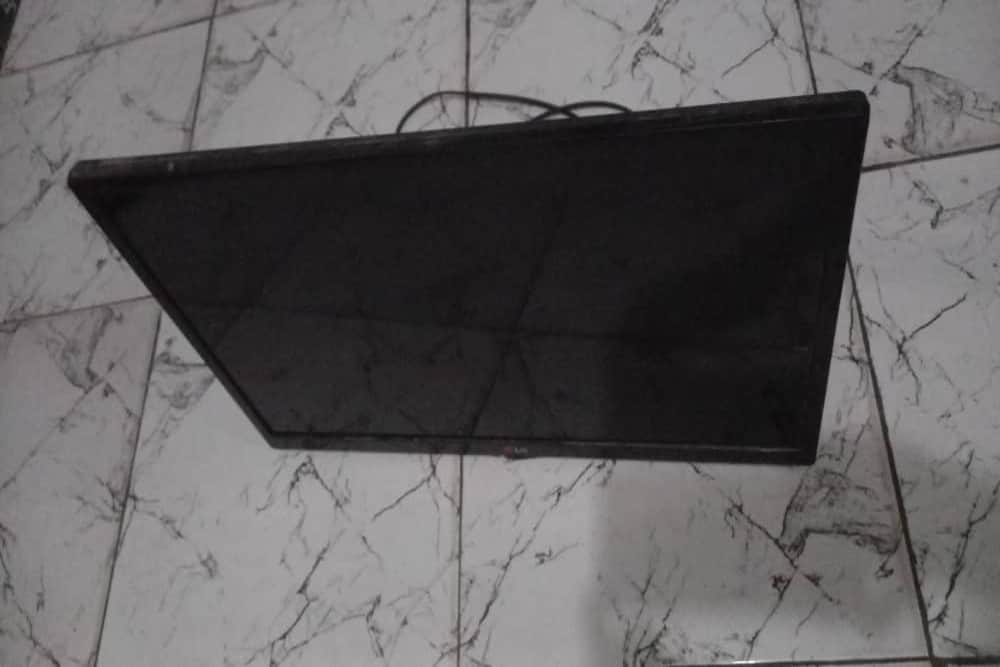What is plasma TV? Looking for the ultimate home theater experience?
Look no further than plasma TVs! With vibrant colors, deep blacks, and unparalleled contrast, plasma technology delivers a picture that will leave you breathless.
As you read through this Powerversity guide, you will learn everything you need to know about plasma TVs. Moreover, you will know how to get the greatest watching experience from them.
However, for the sake of clarity, I have divided this article into sections. The first section of the article provides an overview of plasma TVs.
Moreso, followed by a comprehensive description of their advantages and disadvantages. In the next section, you will find the benefits of Plasma TVs.
In addition, you will learn some of the factors to consider before buying a plasma TV. That’s not even all.
I will also provide you with the best plasma TVs making waves on the market at the moment. Believe me, you’ll love it.
Furthermore, in the subsequent section, you will find answers to some previously asked questions on Plasma TV. I hope it will help you make the right decision.
Lastly, I will leave you with my final thoughts on plasma TVs. And I truly believe that it will be helpful to you in no small way.
So, without wasting much time, let us dive right into the overview.
What Is Plasma TV: Overview

A plasma TV, also known as a plasma display panel (PDP), is a type of flat-screen television that uses a matrix of tiny cells. These cells contain a gas, typically a mixture of neon and xenon, that produces ultraviolet light when electrically charged.
The inner coating of phosphors that coats each cell is then illuminated by this ultraviolet light. Then, causing them to emanate visible light and produce a picture.
Moreso, they are capable of producing high-quality images with deep blacks, vibrant colors, and excellent contrast ratios.
Plasma TVs also have wide viewing angles. It means that the image quality remains consistent even when viewed from the side.
This, however, makes them ideal for use in large rooms or home theaters where multiple people may be watching from different angles.
One of the most impressive features of plasma TVs is their fast response time. They can display fast-moving images with minimal motion blur, making them ideal for watching sports or action movies.
Moreover, plasma TVs have a high refresh rate, typically between 60 and 120 Hz. which helps to further reduce motion blur.
Also, most modern plasma TVs have built-in features to help prevent burn-in, such as automatic pixel shifting and screen savers.
Now, let us discuss the pros and cons of plasma TVs.
What Is Plasma TV: Pros And Cons – LCD Vs Plasma TVs

Pros
Excellent Picture Quality
One of the main advantages of plasma TVs is their superior picture quality. Plasma TVs are able to produce deep blacks and vibrant colors, which makes for a more immersive viewing experience.
Unlike LCD TVs, which rely on a backlight to create images, plasma TVs use tiny cells filled with electrically charged ionized gases to produce light.
This allows plasma TVs to produce a wider range of colors and a more accurate representation of the image. Then, resulting in a more lifelike picture.
Wide Viewing Angles
Plasma TVs offer excellent viewing angles. This means that viewers can enjoy a clear and bright picture from almost any angle. This makes them ideal for use in large rooms or for watching TV with a group of people.
Plasma Televisions keep their image clear regardless of the viewer’s location. In contrast to LCD TVs, which can experience color shifting and brightness loss when watched from an angle.
Fast Response Time
Plasma TVs have a very fast response time, which means that they are able to display fast-moving images without blurring or ghosting.
They are therefore perfect for activities like viewing fast-paced athletics, watching action movies, and playing video games.
This is due to the fact that each pixel on a plasma Screen is regulated by a separate electrode. Therefore, allowing for extremely exact control of the picture.
Energy Efficiency
While plasma TVs were once criticized for their energy consumption, modern models have become much more energy efficient. In fact, some plasma TVs are now more energy efficient than their LCD counterparts.
The reason for this is that modern plasma TVs now use less power than older models. They also have advanced power-saving features that help to reduce energy consumption.
Durability
Plasma TVs are known for their durability. They are less prone to screen burn-in and other image retention issues than other types of TVs.
This is due to the fact that each pixel on a plasma TV is separately updated. Hence, aids in preventing the screen from becoming permanently burned with static pictures.
What’s more, plasma TVs have a longer lifespan than LCD TVs, as they can typically last for up to 100,000 hours of use.
Cons
Screen Burn-In
One of the significant disadvantages of plasma TVs is screen burn-in.
This happens when a static image is displayed on the screen for an extended period, causing a permanent “ghost image” to be burned onto the screen.
This issue can happen with video game consoles or cable boxes, where a static image is displayed for an extended period.
Although most manufacturers have made improvements to reduce the risk of burn-in, it is still a concern for many plasma TV owners.
High Power Consumption
Plasma TVs consume more power than LED/LCD or OLED TVs. This is because plasma TVs use a technology that requires more energy to produce images.
If you are environmentally conscious or looking to reduce your electricity bill, then plasma TVs may not be the best option for you.
Limited Brightness
Plasma TVs have a limited brightness level compared to LED/LCD and OLED TVs. This means that if you watch TV in a brightly lit room, you may have difficulty seeing the images on the screen.
This is because their maximal brightness is reduced, which may lead to less contrast and clarity in bright regions of the screen.
Shorter Lifespan
Plasma TVs have a shorter lifespan compared to LED/LCD and OLED TVs. The plasma gas inside the TV slowly deteriorates over time.
This can lead to a decrease in image quality and eventual failure of the TV. While plasma TVs can last for several years, they have a shorter lifespan compared to other types of TVs.
Heavy and Bulky
Plasma TVs are heavier and bulkier than other types of TVs. This can make it difficult to move the TV or find a suitable location to place it. Also, plasma TVs generate more heat than other types of TVs, which can lead to overheating and potential damage to the TV.
Reflections
Plasma TVs have a highly reflective screen, which can make it difficult to watch TV in a brightly lit room. This can be distracting and reduce the viewing experience.
Benefits of Plasma TVs

Plasma TVs were once the go-to option for high-end home theater systems, but they have largely been replaced by LED and OLED TVs. Nevertheless, they still have some advantages that make them worth considering, especially if you are a cinephile or a sports enthusiast. Here are some benefits of buying a plasma TV:
Picture Quality
One of the biggest benefits of a plasma TV is its picture quality. Plasma displays have a wide viewing angle, meaning you can see the picture clearly from almost any angle. They also have deep black levels, which means that dark scenes in movies and TV shows will look much better than they would on an LED or LCD display. In addition, plasma displays have a wide color gamut, which means that they can produce more colors than other types of displays.
Motion Handling
Plasma displays are known for their excellent motion handling. They can display fast-moving scenes with little or no motion blur, which makes them ideal for sports and action movies. This is because plasma displays have a very fast response time, which means that they can change the color of a pixel very quickly. This results in a smoother, more natural-looking picture.
Energy Efficiency
While plasma displays were once known for being energy hogs, newer models are much more energy-efficient. Many modern plasma TVs have an energy-saving mode that can significantly reduce their power consumption.
Also, they don’t require backlighting as LCDs do, which means that they use less power overall.
Size
Another benefit is in the area of their sizes. Most plasma TVs have larger sizes than other types of TVs. While you can find LED and LCDs that are larger than 60 inches, plasma displays are available in sizes up to 100 inches or more.
This makes them ideal for home theater setups and other applications where a large display is needed.
Cost
While plasma displays are no longer as popular as they once were, they can still be a good value. Because they are no longer the latest technology, you can often find plasma displays at a lower price than comparable LED or OLED displays.
This makes them a good choice for people on a budget who still want a high-quality home theater experience.
Factors To Consider When Choosing A Plasma TV

Screen Size Of A Plasma TV
Screen size is a crucial factor when choosing a plasma TV. You should determine how big you want the TV to be and ensure that it fits into the space where you plan to install it.
Plasma TVs range in size from 42 inches to 65 inches and are even larger in some cases.
Resolution Of A Plasma TV
The resolution of the plasma TV is the number of pixels that make up the screen. The most common resolutions for plasma TVs are 720p, 1080p, and 4K. The higher the resolution, the clearer and sharper the picture quality will be.
Contrast Ratio Of Plasma TV
The contrast ratio is the difference between the brightest and darkest parts of an image.
Plasma TVs typically have higher contrast ratios than other types of TVs, which means they can display deeper blacks and brighter whites.
A high contrast ratio is especially important for watching movies with dark scenes or playing video games.
Viewing Angle Of Plasma TV
Unlike LCD or LED TVs, plasma TVs have a wider viewing angle, which means that you can watch the TV from different positions without experiencing any picture distortion.
Consider the size of the room and how many people will be watching the TV to determine the best viewing angle for your needs.
Color Accuracy
Plasma TVs are known for their excellent color accuracy. They can display a wide range of colors, and the colors are often more vivid and true-to-life than other types of TVs. If you plan to use your TV for watching movies or playing video games, color accuracy is an essential factor to consider.
Input Lag
Input lag is the time it takes for a TV to display an image after receiving a signal. A high input lag can cause delays between what’s happening on the screen and what you’re doing with your controller or keyboard.
This delay can be frustrating and affect your gaming experience. When buying a plasma TV for gaming, ensure that it has a low input lag.
Price
Plasma TVs tend to be more expensive than LCD or LED TVs.
The price will vary depending on the brand, size, and features of the TV. Before buying a plasma TV, ensure that it fits within your budget.
What Is Plasma TV: My Recommendation
| Products Name | Dimensions | Weight | Display Resolution | Refresh Rate | Brand |
| VIZIO 40-inch D-Series Full HD 1080p Smart TV with Apple AirPlay and Chromecast Built-in | 8.81 x 35.55 x 22.81 inches | 12.35 pounds | 4K HD | 40-60 Hz | VIZIO |
| Sony 65 Inch 4K Ultra HD TV X80K Series: LED Smart Google TV with Dolby Vision HDR | 57.25 x 13.38 x 35.75 inches | 49.8 pounds | 4K UHD | 60 Hz | Sony |
| LG 65-Inch Class UQ9000 Series Alexa Built-in 4K Smart TV | 2.3 x 57.2 x 33 inches | 48.1 Pounds | 4K HDR | 60 Hz | LG |
| Amazon Fire TV 55″ 4-Series 4K UHD smart TV | 48.7 x 28.3 x 3.5 inches | 25 Pounds | 4K UHD | 60 Hz | Amazon Fire TV |
| SAMSUNG 55-Inch Class Crystal 4K UHD AU8000 Series HDR | 8.9 x 48.5 x 29.5 inches | 35.7 Pounds | 4K UHD | 60 Hz | SAMSUNG |
Frequently Asked Questions On What Is Plasma TV

There is no definitive answer to whether plasma TVs are easier on the eyes as it largely depends on individual preferences and usage patterns. However, it is important to maintain a comfortable viewing distance and adjust the settings to reduce eye strain and fatigue.
Plasma TVs typically have a lifespan of around 100,000 hours of use. This means that if you use your TV for 8 hours a day, it should last for more than 30 years.
Yes, water can damage a plasma TV. Plasma TVs have sensitive electronic components and exposure to water can cause short circuits and other electrical problems, leading to permanent damage to the TV.
There are many ways to care for your plasma TV. Some of the recommended methods include:
Avoiding placing the TV in direct sunlight or areas with extreme temperatures
Cleaning the TV screen and frame regularly with a soft, dry cloth
Don’t touch the screen with your hands or fingers
The brightness of a plasma TV varies, depending on the model and settings, but in general, plasma TVs are known for having excellent brightness and contrast ratios.
The choice between plasma and LED TVs depends on your personal preferences and needs. If, for instance, you prioritize picture quality and viewing angles, a plasma TV might be the better choice.
However, if you want a brighter, more energy-efficient TV with a longer lifespan, an LED TV might be the better option.
Plasma TVs have better color accuracy and black levels; better motion handling; and wider viewing angles.
When cleaning a plasma TV screen, it is important to avoid using any harsh chemicals or abrasive materials that could damage the screen. Therefore, endeavor to check your TV’s user manual for any specific cleaning instructions or recommendations from the manufacturer.
The electricity consumption of a plasma TV varies depending on its screen size, age, and model. On average, a plasma TV with a screen size of 42 inches can consume around 200 watts per hour when in use.
It is not recommended to leave a plasma TV on all the time, as doing so can result in several issues.
Also, leaving a plasma TV on for extended periods can also result in decreased lifespan and potential hardware failures due to the constant use and heat generated by the display.
My Final Thoughts On What Is Plasma TV

The development of plasma TVs has revolutionized the way we watch television, providing a larger, brighter, and more detailed picture than traditional cathode-ray tube (CRT) TVs.
As I said earlier, plasma TVs have a wider viewing angle than LCDs, allowing more people to view the screen from different angles without experiencing color or contrast distortions.
Although, Plasma TVs have their drawbacks, however, their pros far outweigh the cons in terms of the overall viewing experience.
Of course, plasma TVs remain a popular choice for home entertainment systems due to their superior color accuracy, black levels, and viewing angles. However, with the emergence of newer display technologies like OLED and QLED, the popularity of plasma TVs has declined in recent years.
I hope you found this article ”What Is Plasma TV” very helpful.
Kindly share your thoughts with us by filling out the “Leave A Reply” form at the end of this page.
To read more articles like this, please click on THIS page. You may also find the pages below very helpful:




